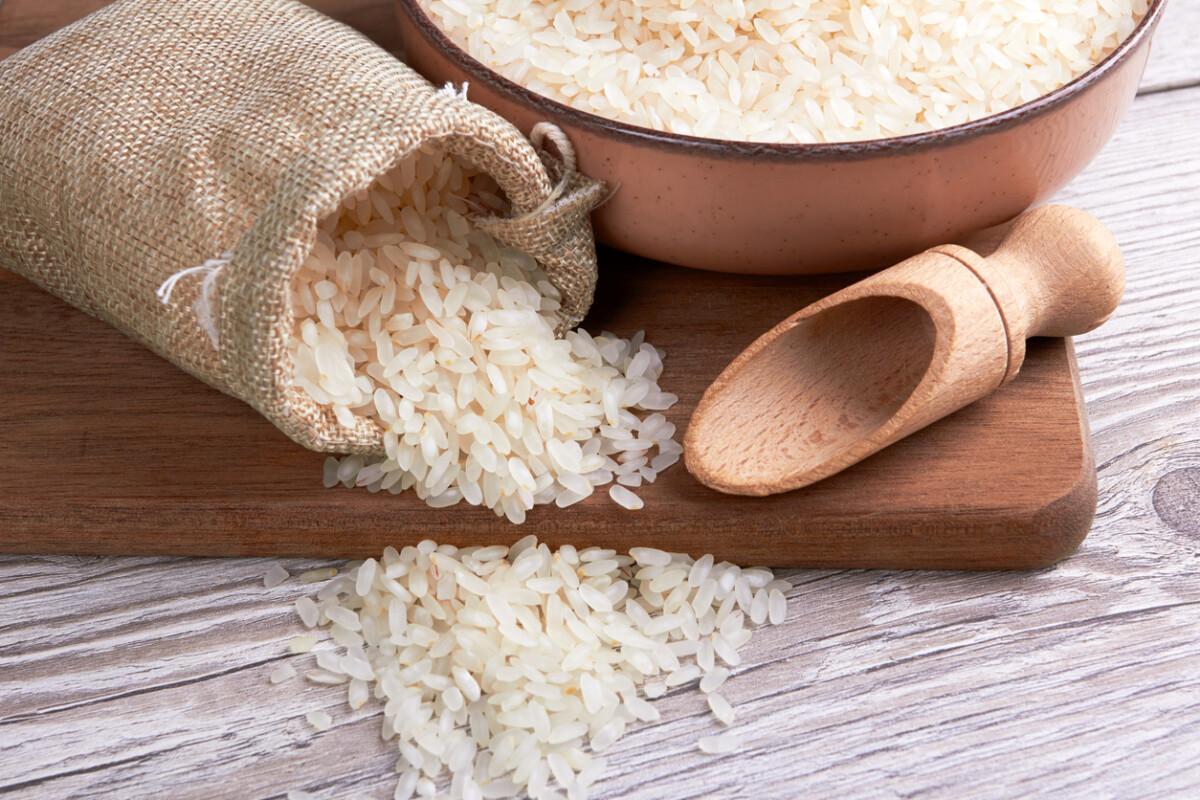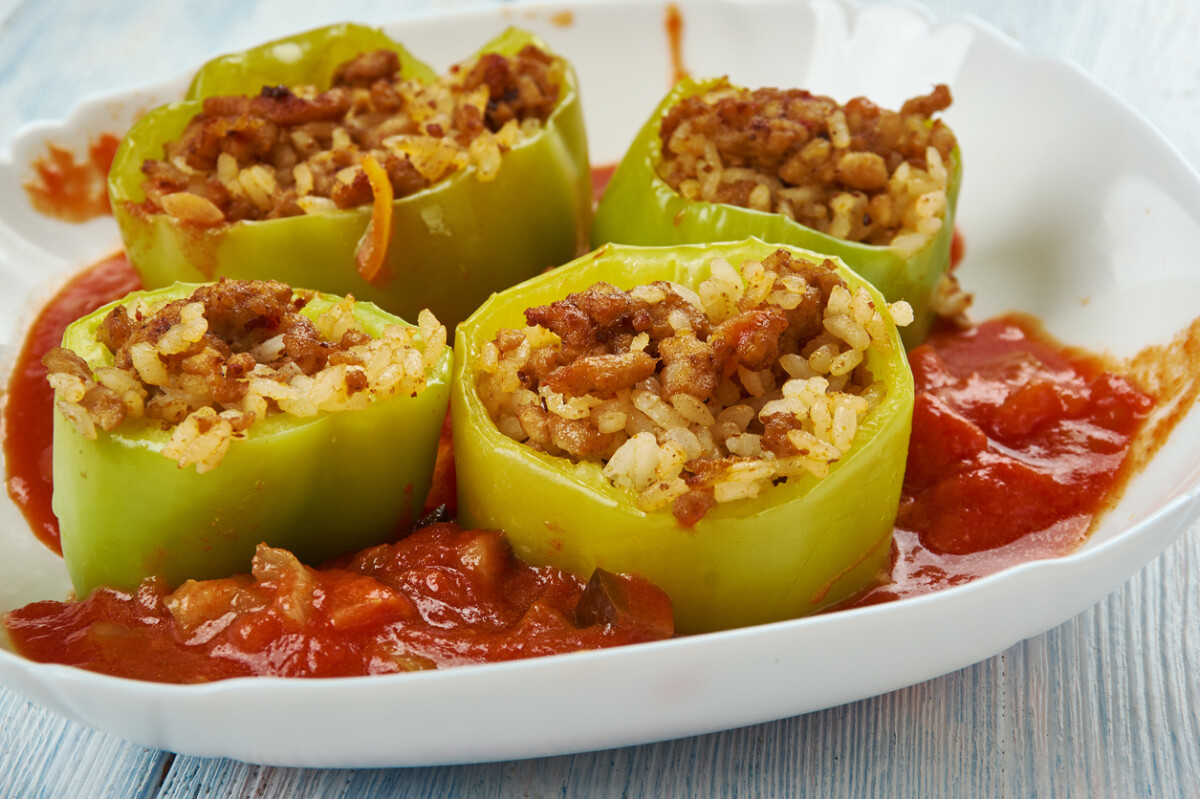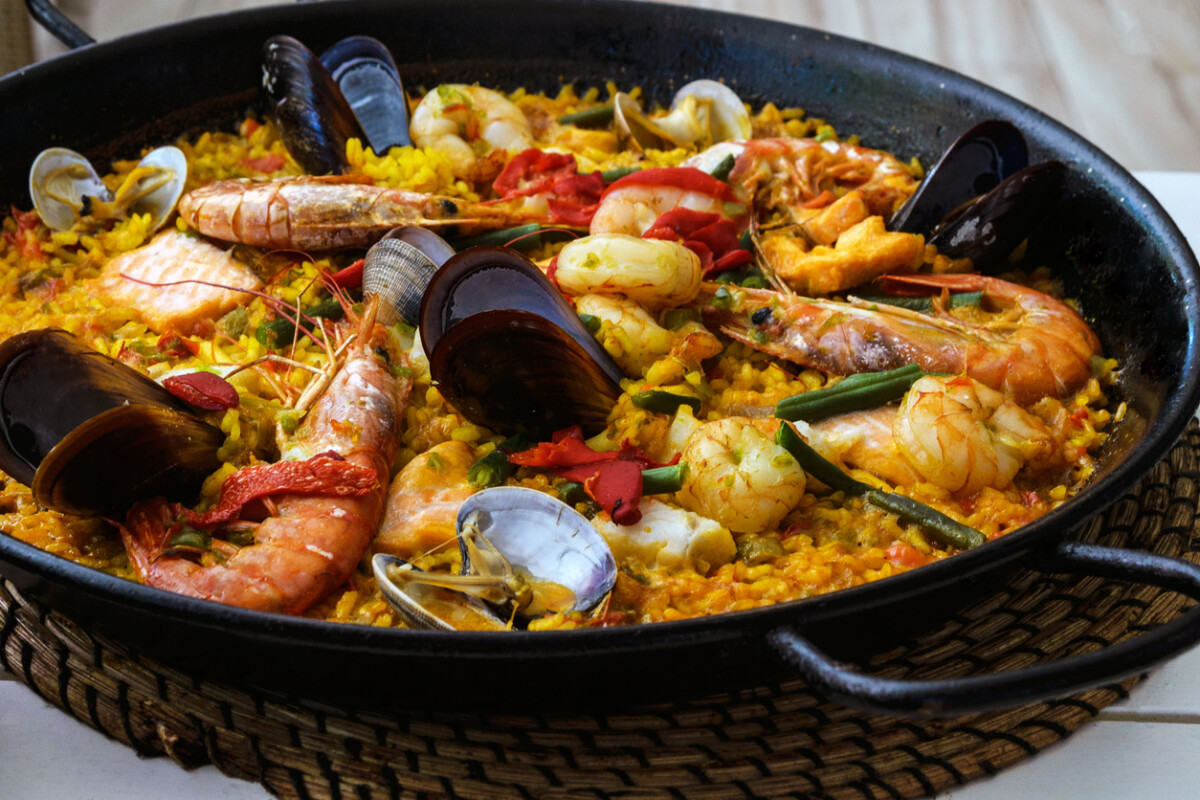Explore the whole tale of Mediterranean Rice and unlock a world of vibrant flavors, nutritional wonders, and timeless culinary traditions. Continue reading for a delightful journey through the art of choosing, cooking, and savoring rice at the heart of the Mediterranean diet.

Rice in a bowl
In the vibrant tapestry of Mediterranean cuisine, the story of rice unfolds as a versatile grain that journeyed from distant lands to become a culinary mainstay. Centuries ago, rice found its way into the heart of Mediterranean kitchens, bringing a wealth of adaptability and a chameleon-like ability to transform into a myriad of delicious dishes.
But for me, and perhaps for many of you, rice is more than just a culinary companion—it’s a timeless presence at the heart of our homes. On my table, cooking rice is a ritual, a tradition that spans generations. Growing up, rice wasn’t merely a side dish; it was the steadfast staple, the number one source of comfort and carbohydrates after bread.
Introduced to the region through a tapestry of cultural exchanges, rice became more than a mere grain—it became the canvas for creating wholesome meals harmoniously paired with vegetables, meats, and an array of aromatic spices. The evolution of rice in Mediterranean cooking reflects a gastronomic and cultural journey, as it seamlessly integrates into daily meals, contributing to the rich mosaic of flavors.
Despite the wide variety of rice available—thousands of varieties with unique characteristics—the simplicity of categorizing them by grain size guides the discerning cook in the Mediterranean kitchen. Whether long-grain, medium-grain, or short-grain, the choice of rice becomes a crucial factor in determining the texture and taste of a dish, from fluffy pilafs to creamy risottos

Rice with vermicelli is a traditional Mediterranean rice dish.
Long Grain Rice:
In the vast tapestry of rice varieties, long-grain rice takes center stage, with its origins spanning Asia, the Middle East, and the Americas. You’ll always find two containers of these iconic rice varieties in my kitchen – Basmati and Jasmine. I’ve been cooking rice since I first learned to cook at the age of 16, and these have become my go-to choices for their unparalleled taste and texture.
Basmati Rice:
Known for its long, slender grains and aromatic fragrance, Basmati rice is a staple in Indian and Middle Eastern cuisines. It is ideal for biryani, pilaf, and side dishes. The rice-to-water ratio is typically 1:2, and soaking enhances its elongation. Boiling, then simmering for 15-20 minutes, results in a fragrant and fluffy dish. Popular examples include Greek Lemon Rice, Lebanese Hashweh Rice, Mediterranean Rice Bowl with Za’atar and feta, and Mujadara. The final yield is approximately 3 cups of cooked rice per cup of raw Basmati rice.
Jasmine Rice:
Fragrant rice has a slightly sticky texture when cooked, and jasmine rice is common in Southeast Asian cuisine and is suitable for stir-fries and curries. The rice-to-water ratio is usually 1:1; rinsing is recommended until the water runs clear. Simmering for 15-20 minutes results in a slightly sticky texture. Example dishes include Mediterranean Rice Pilaf with Vegetables, Greek Chicken and Rice Soup, and Lemon Garlic Shrimp with Jasmine Rice. The final yield is approximately 3 cups of cooked rice per cup of raw Jasmine rice.

Avgolemono is a Greek chicken rice lemon soup.
While long-grain rice varieties share some common characteristics, the cooking methods may vary slightly depending on the specific type. Basmati rice, for example, benefits from soaking before cooking to enhance its elongation. With its slightly sticky texture, Jasmine rice may require rinsing to remove excess starch for a fluffier result. American long-grain rice, known for its separated grains, typically follows a straightforward boiling and simmering process. It’s always advisable to check individual packaging instructions for your specific rice variety to ensure optimal results.
Medium Grain Rice
Embarking on the terrain of medium-grain rice opens a realm of culinary possibilities, with its balance of starch and tenderness contributing to a diverse array of dishes. Among the noteworthy varieties, Calrose and Arborio stand out, each offering a unique texture and flavor profile. Calrose, popular in Mediterranean, Asian, and Middle Eastern cuisines, holds a slight stickiness that enhances its suitability for stuffed vegetables like cabbage and bell peppers. Arborio, renowned in Italian cuisine, transforms into creamy risotto, showcasing its ability to absorb flavors and achieve a delectable consistency. As you delve into the world of medium-grain rice, consider trusted brands like Lundberg Family Farms, Botan, and Riso Scotti for a premium culinary experience.
Whether you’re indulging in a bowl of risotto or stuffed vegetables with a delightful bite, medium-grain rice adapts seamlessly to diverse cooking styles. Its ability to absorb flavors while maintaining a tender texture makes it a preferred choice for Mediterranean-inspired dishes.
Cooking Guide: Rice-to-Water Ratio: Typically 1:1.5 to 1:2. Rinsing: Optional; rinsing can help control stickiness. Cooking Time: Slightly shorter than long-grain rice, resulting in a moist and tender texture.Final Yield: Approximately 2.5 to 3 cups of cooked rice per cup of raw medium-grain rice.

Stuffed Peppers, a delicious Middle Eastern dish
Example Dishes: Mediterranean Rice Pilaf: A savory dish with medium-grain rice cooked with broth, herbs, and vegetables. Creamy Rice Pudding: A delightful dessert made with medium-grain rice cooked in milk and sweetened. Stuffed Vegetables: Medium-grain rice shines in dishes like stuffed zucchini and bell peppers, where its slight stickiness enhances the overall texture.
Short Grain Rice
Short-grain rice is a category known for its plump, almost round grains and delightful stickiness when cooked. In the world of short-grain rice, Arborio takes the spotlight, boasting its versatility in crafting creamy Italian risotto. Beyond its role in risotto, short-grain rice is pivotal in creating delectable sushi rolls, where its sticky texture helps bind the rice together. Embracing Mediterranean influences, short-grain rice finds a place in dishes like stuffed bell peppers, offering a textural element that enhances the overall dining experience.
When it comes to short-grain rice, Arborio stands as the epitome of culinary magic, transforming into a velvety canvas for flavors in risotto. For an authentic touch in your sushi creations, brands like Nishiki and Kokuho Rose provide a reliable source of quality short-grain rice. Join us as we explore the versatile nature of short-grain rice, from the comforting creaminess of risotto to the structural integrity it brings to sushi and stuffed vegetables.
Cooking Guide: Rice-to-Water Ratio: Typically 1:2 (one part rice to two parts liquid).Technique: Simmering with occasional stirring to achieve a slightly sticky texture. Cooking Time: Around 15-20 minutes.

Traditional Spanish seafood paella dish.
Example Dishes: Let’s talk about the wonders short-grain rice can weave in the kitchen. It’s a magical ingredient that brings my favorite dishes to life. First, there’s risotto – the creamy, savory Italian creation that short-grain rice effortlessly transforms into. The way it absorbs flavors, creating a velvety consistency, never fails to impress. And then, there’s the charming Spinach Paella, a personal favorite in my kitchen. Mixed with aromatic herbs and spices, short-grain rice forms the flavorful base, turning a meal into a Mediterranean feast.
In the vibrant palette of the Mediterranean diet, rice takes center stage, contributing to nutritionally rich and balanced meals. As a prime source of complex carbohydrates, rice provides sustained energy, aligning perfectly with the active lifestyle prevalent in the Mediterranean region. Brown rice, a standout choice, offers a fiber-packed boost for digestive health and aids in weight management.
Enriched with essential nutrients such as B vitamins, iron, and magnesium, rice becomes a valuable ally in supporting overall health. Paired with heart-healthy fats like olive oil, it seamlessly aligns with the Mediterranean diet’s principles. Beyond its nutritional prowess, rice stands as a gluten-free option, adding versatility to cater to diverse dietary preferences.
Moderation is the guiding principle of the Mediterranean diet, and rice effortlessly integrates into a tapestry of nutrient-rich meals that celebrate balance and diversity. Whether elevating a paella from Spain, starring in a comforting risotto from Italy, or gracing a pilaf from Greece, rice goes beyond sustenance, becoming a cornerstone for well-being and the art of mindful eating. In every grain, there lies a promise of a flavorful journey through the heart of Mediterranean culinary traditions.

Mediterranean ingredients.
Choosing and Storing Quality Rice









Leave a Reply